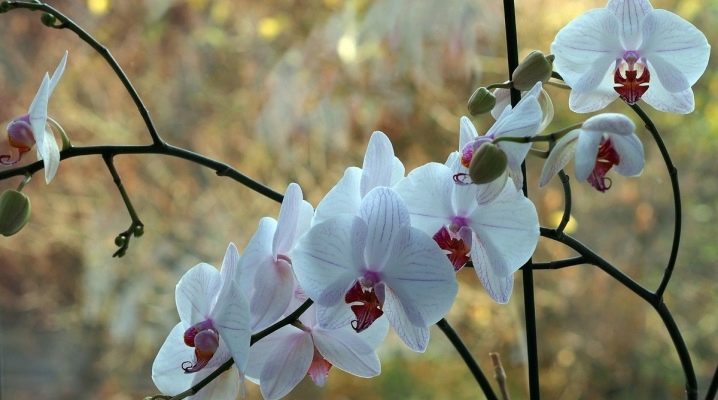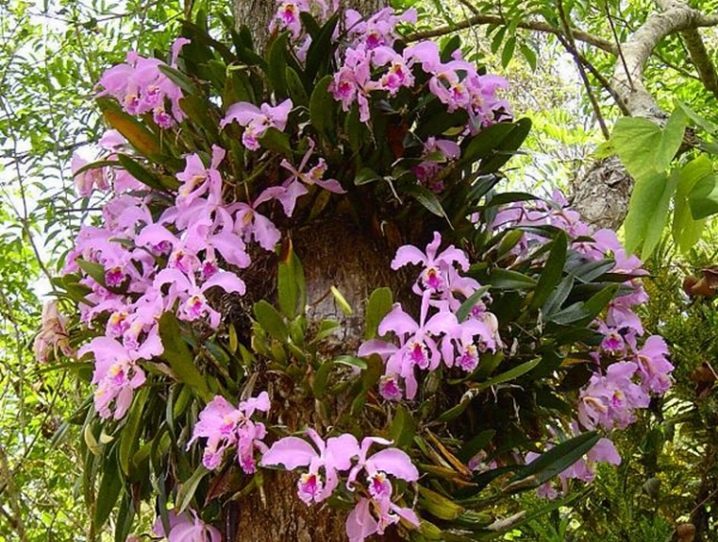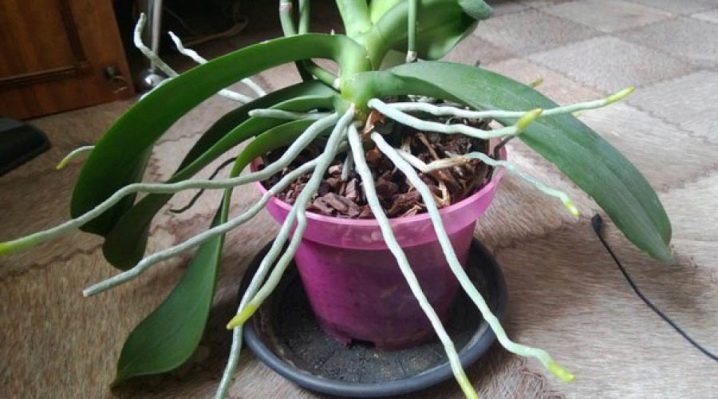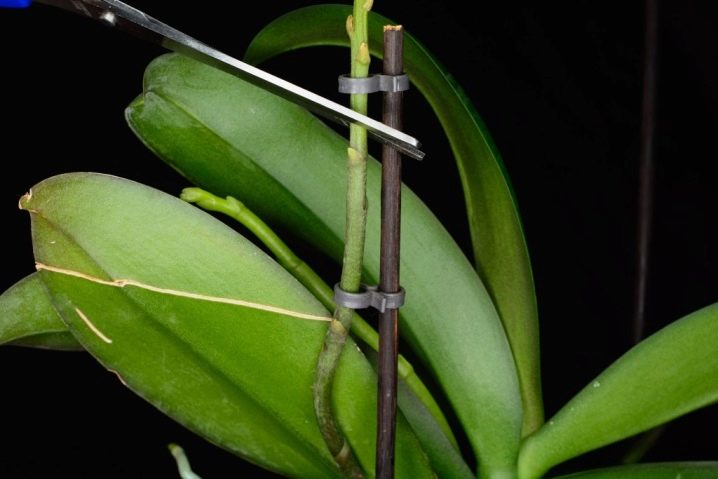How to distinguish a root from a peduncle in an orchid?

The previous ideas that only an experienced florist can grow orchids is no longer relevant in our time. Now on sale there are many types of these amazing plants, which are easy to care for at home. Of course, beginners, before deciding to buy this demanding flower, should carefully study the information about this difficult plant. But the theory requires immediate and cultivation experience.
Do not despair if at first you have a lot of questions, today on the Internet you can easily find the articles, photos or videos you need.
Orchids in the wild
Orchids (or orchids) are the largest family of monocotyledonous plants. In nature, representatives of this family can be found everywhere, with the exception of the harsh Antarctica. Most orchids live in an ideal hot and humid tropical climate for their development. These plants can grow as perennial grasses, low shrubs, or large woody vines. In the comfort of greenhouses, these beautiful flowers can live for over 70 years.

Flower structure
The appearance of these ancient plants has practically not changed. Orchid species that do not form bulbs have large, fleshy leaves. The stems of these flowers come in different lengths depending on the variety. The aerial roots of orchids do not take root in the soil, they receive nutrients in the process of photosynthesis, and absorb moisture from the air. Refined inflorescences, varied in their structure and color, are always located on the peduncle.
Features of aerial roots
The aerial roots of an orchid can grow from any part of the plant: from the root collar, between the leaves from the stem, through the leaf plate and even from the leaf sinus (like a peduncle). Root growth is not always downward. It can also grow to the side and sometimes upward. In color, the root of the orchid is grayish, rounded at the end. Its surface is smooth and free of build-ups.

The appearance of peduncles
A flower stalk is a shoot on which flowers are formed. It is sometimes possible to observe about 50 buds on one peduncle. The stalk of the peduncle, as a rule, grows out of the axil of the leaf plate (the axil of the leaf is the angle located between the leaf and the stem of the plant). Along its entire length, the orchid peduncle is painted in shades of green and always tends to grow upward, towards the light, but at the same time it can bend, twist into rings. The surface of the arrow is not smooth, it is covered with scales, and the tip is pointed.
How to distinguish a root from a peduncle?
At the very beginning of its growth, the root and peduncle of orchids are very similar in appearance. You can determine what exactly appeared on your houseplant based on the following observations.
- Place of appearance. The aerial root can grow from any part of the orchid, and the peduncle develops from the leaf axils.
- The color of the appendix. The root is gray, while the peduncle is green.
- Sprout tip shape and color. If it is an aerial root, then the tip is blunt and not gray, like the root surface, but green or pink. At the peduncle, the tip is always green, like itself, and pointed.
- Surface structure. At the root of the orchid, the surface is smooth along its entire length, without scales.The peduncle necessarily has scales.
- Direction. The root, as mentioned earlier, can grow not only downwards, but also sideways and upwards. The arrow of the peduncle is always directed upward, as it needs light.

Why do you need to know if it is a root or a peduncle?
Finding out whether the root is a sprouted sprout or a peduncle is not just curiosity. The subsequent steps for caring for this wonderful plant will depend on this. If this is a peduncle, then your green pet will definitely need top dressing. In addition, the watering mode will change.
In a diseased plant, the peduncle should be removed, because flowering will take away the strength necessary for growth.
Flower stalk care tips
By caring for the flower stalk, you will prolong the flowering of your orchid. It is important to observe the following recommendations of experts.
- If you understand that this is the arrow of the peduncle, do not transplant the orchid under any circumstances.
- Secure the stem to the holder so you don't accidentally break it or be harmed by your pets. Use a plastic or wood support and a special clip to secure the arrow. You can simply tie it up with threads or string without tightening too much.
- Give the plant sufficient light. Light up the orchid with special phyto lamps if it lacks natural light.
- Water the orchid as usual, but it is recommended to reduce watering once flowering begins.
- Feed the plant until the first flowers appear.
- Protect your green friend from drafts and hot air currents. Otherwise, all buds and flowers of the orchid may fall off.
- The flower stalk can dry out quickly after flowering. Cut it off with scissors and dust the cut with charcoal. Avoid stagnation of water in the hemp formed after cutting off the dried arrow. You can cover the hole with wax.
- Do not cut the peduncle while it is green.

Orchids are amazing plants, the growth and flowering of which is very exciting to watch. This will give you a lot of positive emotions. It is also believed that if you place an orchid in the eastern part of your home, it will give your home a peaceful mood and relieve you of various diseases.































The comment was sent successfully.